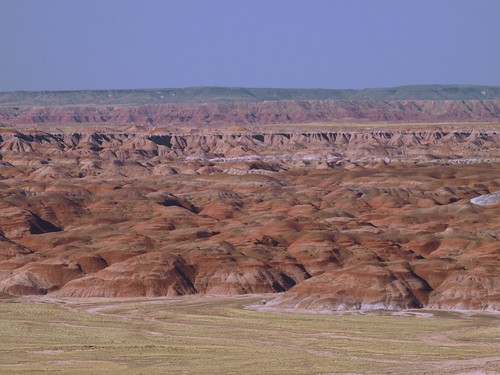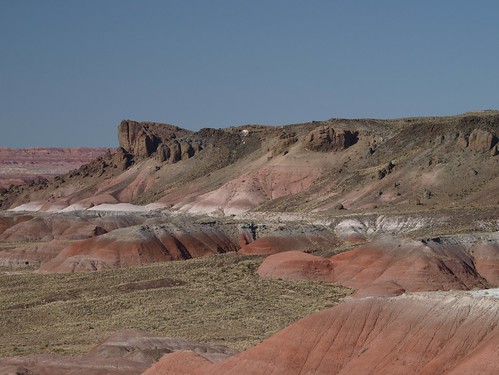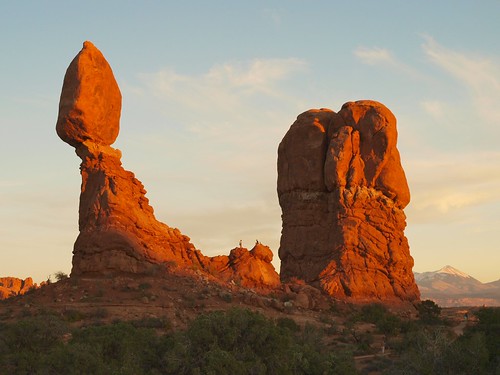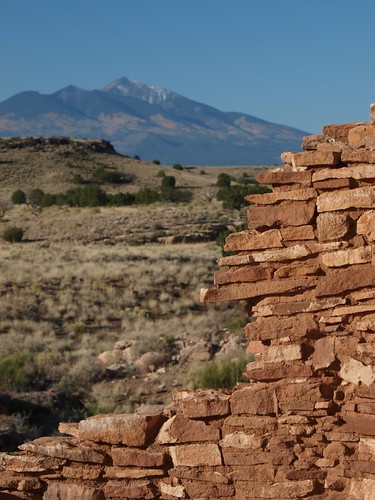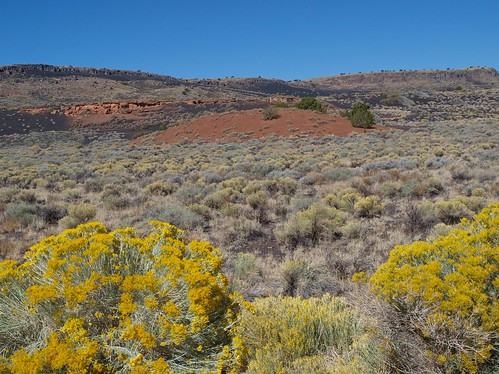No saguaro or organ pipe cacti or other familiar succulents in this desert. The Painted Desert in northeastern Arizona really isn’t a desert at all – you need to go further west and south for real desert – but is located near short grass plains or desert grasslands. The Painted Desert is barren red Chinle mudstone. Various combinations of minerals provide the different coloration – red is iron oxide and the white is gypsum.
These formations were formed 220 to 225 millions of years ago, and though the rocks are not high, they are approximately 800 feet thick. No drilling for water through this stuff.
Unfortunately, we were traveling through the area in early afternoon. I would have liked to have captured the colors nearer sunset when the reds would reflect deeper colors. It is still an amazing drive, though, through an ancient world that is well preserved. An incredible number of fossils and archeological ruins are found throughout the park.
